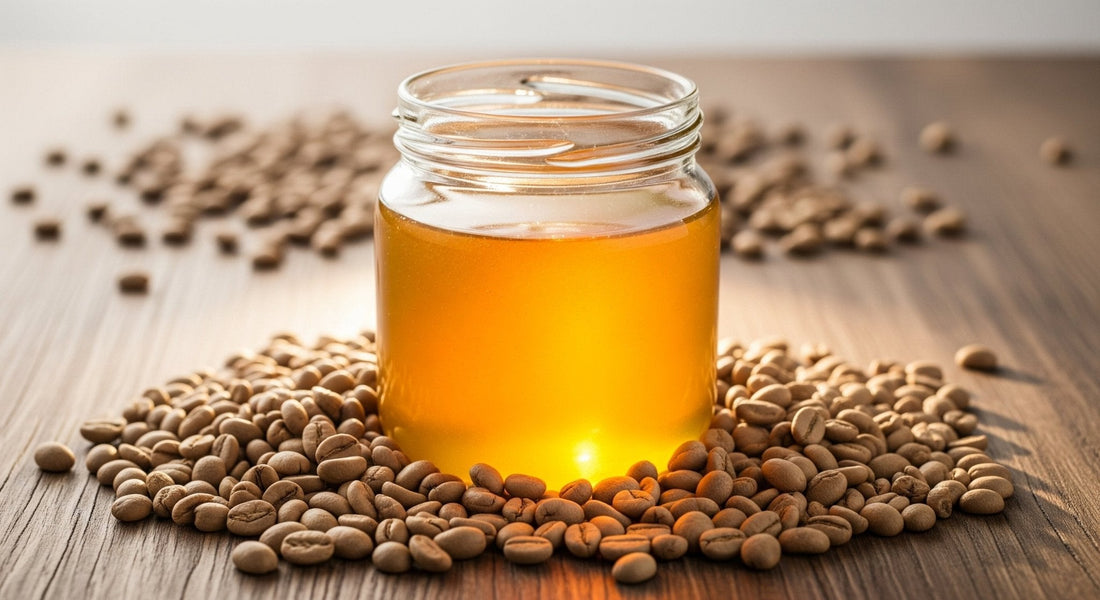
Honey (Pulped Natural) Process Coffee: Balanced, Sweet, and Versatile
Honey process coffee sits between washed and natural methods and doesn't involve any actual honey. By pulping the cherry but leaving sticky mucilage on the seed during drying, producers create a style that blends washed clarity with natural sweetness—an appealing middle ground in specialty coffee taste.
Not sure when to choose honey process single origin over a blend? Our Single Origin vs. Blends guide breaks down how origin and blending choices interact with processing style.
Origins & Regional Styles
The honey method took off in Costa Rica in the 2000s as micromills sought quality differentiation with lower water use. Producers dialed “honey color” by how much mucilage remains and how it caramelizes during drying: white/yellow (less mucilage; cleaner), red (moderate; fruitier), and black (most mucilage; sweetest, heaviest).
The Step-by-Step Workflow (Farm Level)
- Selective picking & float: Ripe cherry only; remove defects via flotation and hand-sorting.
- Pulping: Skin removed; producer sets depulper to retain target mucilage percentage.
- Mucilage-on drying: Thin, even layers on beds/patios; frequent turning prevents clumping and microbial hotspots. Shade and mesh screens manage heat and airflow.
- Drying curve: 10–20 days to ~10.5–11.5% moisture depending on honey style and climate; slower curves accentuate caramelization and body.
- Rest, hull, grade: Stabilize moisture, then mill and sort.
Flavor Science: Why Honey Tastes “Sweet”
Retained mucilage is rich in sugars and pectins. During drying, mild fermentation plus oxidative reactions create caramel, toffee, and fruit esters. Compared with washed, honey coffees often show higher perceived sweetness and a rounder mouthfeel; compared with naturals, they typically present cleaner aromatics and slightly higher acidity.
Quality Management & Defects
- Clumping/stickiness: Leads to uneven drying; solved with high-frequency turning and thin layers.
- Over-fermentation: Riskier in red/black honey; use shade, airflow, and nighttime tarping to control temps.
- Insect pressure: Sticky surfaces attract pests; mitigate with good sanitation and bed design.
Environmental & Economic Notes
Honey processing uses less water than classic washed methods, reducing mill footprint while commanding premiums for differentiated cup profiles. Labor demand is higher during drying, which can improve local employment when managed sustainably.
Brewing Recommendations (Home)
- Pour-over: 1:16 at 92–95°C, medium grind. Aim for balanced extraction to showcase caramelized sweetness and gentle fruit.
- Drip: 1:1:17. Honey coffees excel as a daily brewer thanks to their approachable balance.
- Espresso: 1:2 at 92–94°C; expect syrupy texture and layered sweetness. Great for straight shots and flat whites.
Origin Examples & Profiles
- Costa Rica (Yellow/Red Honey): Honey, citrus, stone fruit; medium body, polished finish.
- El Salvador / Honduras (Red/Black Honey): Caramel, red fruit, cocoa; fuller body and lower acidity.
- Brazil (Pulped Natural): Almond, milk chocolate, brown sugar; ultra-approachable cup.
Misconceptions to Drop
- “Honey uses actual honey” – The name refers to sticky mucilage, not added sweeteners.
- “All honey tastes the same” – Color designations reflect real differences in mucilage, drying time, and cup profile.
Shop Steel Oak Coffees
Looking for sweetness with poise? Discover and subscribe to our Single Origin Coffees or get rotating highlights via the Steel Oak Explorer Club. Then compare your honey favorite with Washed and Natural profiles, and see where each fits in Single Origin vs. Blends
Further reading: Coffee Taster’s Flavor Wheel • What “Specialty Grade” Actually Means • Single Origin vs. Blends
